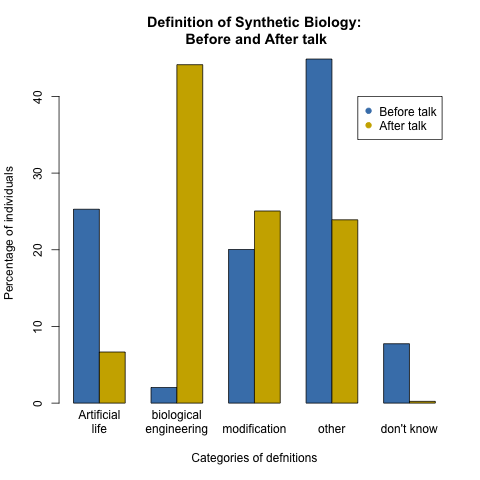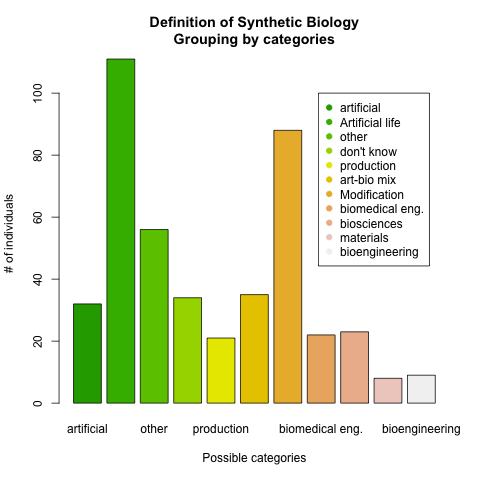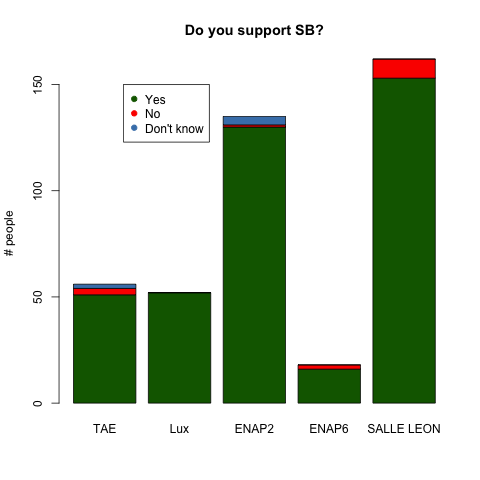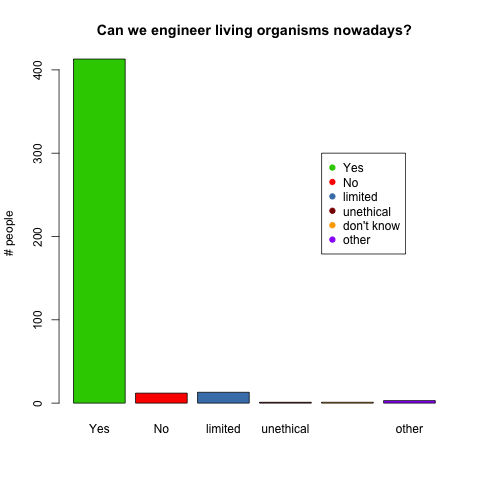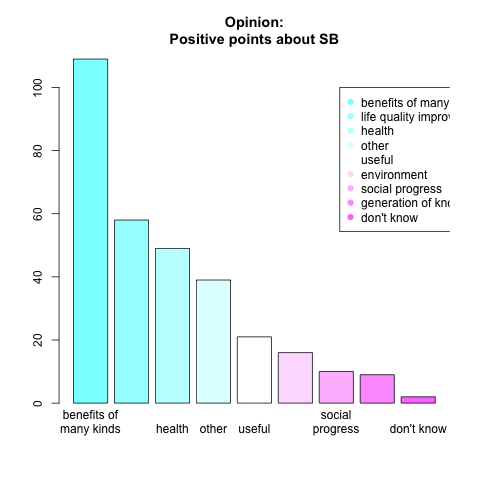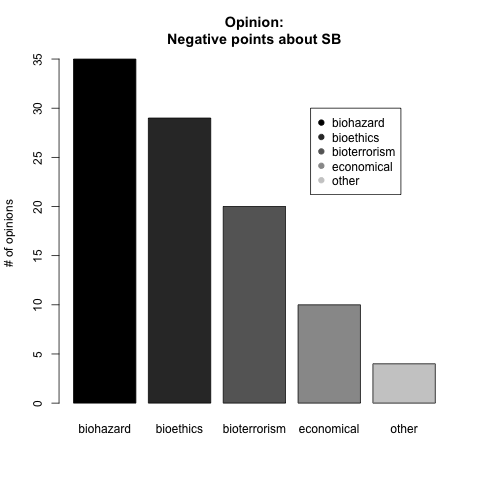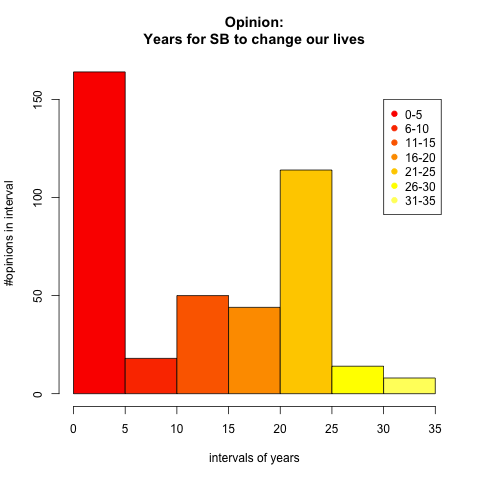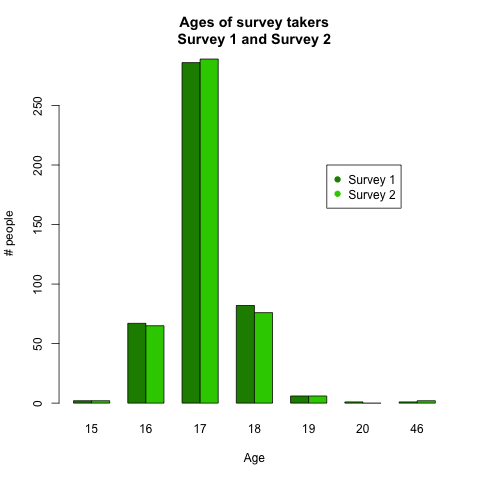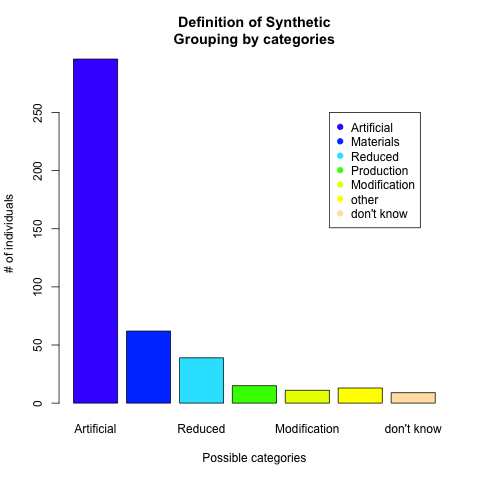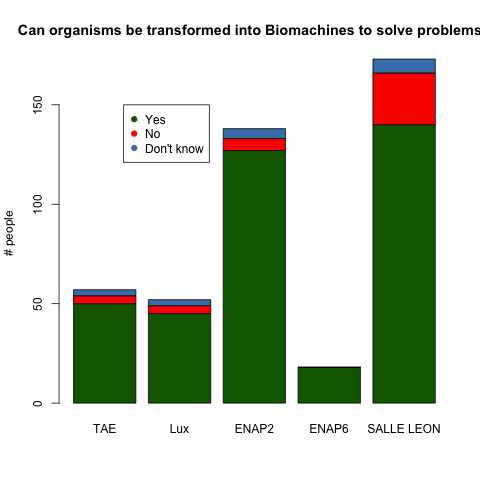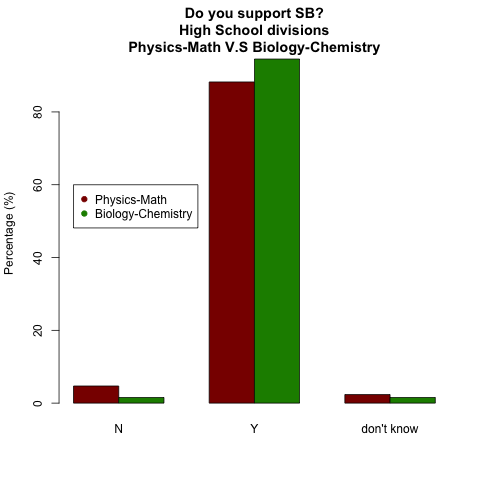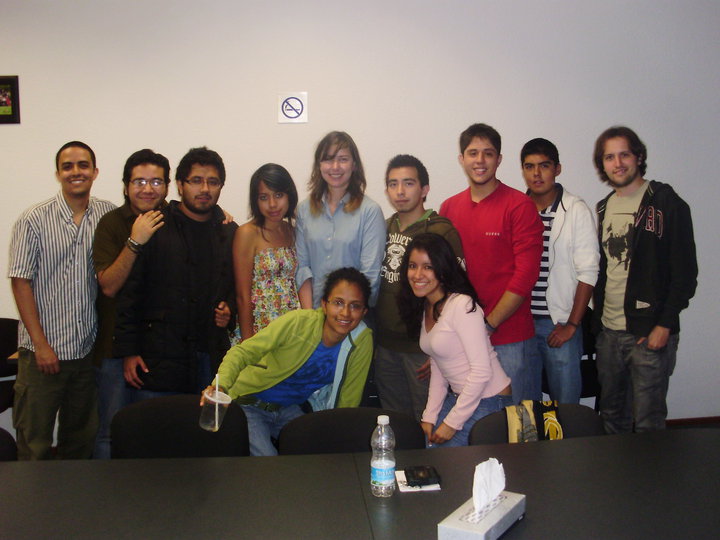Team:UNAM-Genomics Mexico/Safety
From 2010.igem.org

Public Perception
Human Practices
Please select an option in the dropdown menu below, to find more information about what we did.
These are the results for our Human Practices activities.
The raw data will be available here.
Special Talk
We had talk Christina D. Smolke while she was in Cuernavaca participating in the Seminars of Frontiers in Genomics, a course in Undergraduate program in Genomic Sciences.
The talk was focussed specially in two parts.
- Explaining our proyect and how does it function.
- Perspectives, realities and backwards in synthetic biology in iGEM competition.
For the first part Dr. Smolke listen our project and told us her opinion about it, she found interesting our proyect specially because it has the potential to stablish communication between life and computers.
Second part, was focussed in perpectives in SynBio specially the work on Eukarya Synthetic Biology, she was fascinated whit proyect of Heildelberg 2009. Also we talked about part Registry issues, and finally we asked to her, about her own definition of sytntetic biology; she said that:
"My definition is: the application of engineering design principles to the construction, characterization, and design of biological systems. Specially synthetic biology, focused in developing a foundational tool bases that make biology easier to manipulate. That make faster and scalable."
Safety
Identifying Safety Issues
Probability
Could there be an unplanned event or series of events involving your project, resulting in either death, injury, occupational illness, damage to equipment or property, or damage to the environment? How likely is that going to happen?
There could always be some sinister series of unfortunate events that leads to disaster, however given the nature of our project, we believe that that little beyond minimal environmental exposure is the scope of catastrophe. Our BioBricks parts are mainly enzymes. These enzymes catalyze reactions that are already found in nature in a wide variety of environmental niches. As such, they are nothing new. Nature has found ways of balancing their actions, so even if they were to be exposed dramatically, the perturbation should be minimal and easily self-correcting.
Does your project require the exposure or release of the engineered organism to people or the environment (e.g. as medicine, for bioremediation)?
Our project does not require exposure or release to either people or environment. In fact, this project is meant to be tested under extreme biological, chemical and even thermal isolation. One of the points we want to prove is the fact that we can communicate information where there is no possible biological, chemical or even thermal bridge spanning our communicating entities. They will be isolated, both from each other as from the environment.
Hazard
Could your device, when working properly, represent a hazard to people or the environment?
We do not believe our device represents a hazard. If working properly, our devices will stress the host organism without generating any short-term benefit. As such, they are only an added metabolic process to the host. At most, our devices would generate a higher-than-average amount of reactive oxygen species, but not in a significant manner. Perhaps, should the reactions be extreme in number, the light emission could be a hazard to the naked eye...
Is your engineered organism infectious? Does it produce a toxic product? Does it interfere with human physiology or the environment?
Our engineered organism is not infectious, nor does it produce toxic products. The only dangerous product of our devices are reactive oxygen species, however their net production is not significant. Moreover, human physiology (as well as most other physiologies to our knowledge) is quite capable of dealing with reactive oxygen species so long they do not exceed a certain threshold.
What would happen if one or several bioparts change their function or stop working as intended (e.g. through mutation)? How would the whole device or system change its properties and what unintended effects would result thereof?
Mutation of our BioBrick parts would most likely result in loss of function. Thus, our organisms would either go blind, or stop glowing. Should the extraordinary happen and gain of function occur, we fathom our organisms would be over-taxed and they would die. Since our parts are only a net drag on the survivability of our organisms, it would require some extreme mutations to render them a selective advantage for the host. However, this risk exists for any exogenous protein in a host.
What unintended effects could you foresee after your engineered organism is released to the environment?
We can foresee the spread of the BioBrick parts through the environmental bacterial populations via horizontal gene transfer. However, since the bearing plasmid only holds a selective advantage under antibiotic conditions, we expect it to be quickly lost. Moreover, in the event our devices escape the original plasmid and hop into another structure, light communication holds no selective advantage in and of itself within current free-living populations of E. coli. Thus we feel confident our devices would over-tax their hosts and ensure death.
Try to think outside the box, what is the absolut worst case scenario for human health or the environment, that you could imagine?
The Absolute Worst Case Scenario? As if in a movie by Micheal Bay? Well...
We can image our E. colis forming a structure much like a neural network to process information as a colony instead of as a single cell. Under quite permissive conditions, they might gain a selective advantage by operating in a multi-cellular organization. If grown to 1.2 optical density in a 1 liter beaker, they may very well have more connections than a human brain. Given sufficient time, they might learn to think as a collective. Should they develop proteins that receive wavelengths of around 1mm, they might tune into Radio & Television. Thus, they might learn of and imitate the Borg Collective, posing a danger to Human supremacy of the Planet!!!
Seriously though, due to the chassis mutations required by our system, either the bacteria are producing non-stop tryptophan (which constitutes a tremendous metabolic stress), or they can not adjust osmolarity (which makes them utterly incompetent in the outside world). Morevoer, for them to sense in more than one color, both mutations need to be present, which makes the bacteria even less competent. One way or another, these cells need careful human attention to survive. Thus can the be easily controlled.
Links
The iGEM Safety page is this one: safety page.iGEM
iGEM is the International Genetically Engineered Machines Competition, held each year at MIT and organized with support of the Parts Registry. See more here.Synthetic Biology
This is defined as attempting to manipulate living objects as if they were man-made machines, specifically in terms of genetic engineering. See more here.Genomics
We are students on the Genomic Sciences program at the Center for Genomic Sciences of the National Autonomous University of Mexico, campus Morelos. See more here.This site is best viewed with a Webkit based Browser (eg: Google's Chrome, Apple's Safari),
Trident based (Microsoft's Internet Explorer) or Presto based (Opera) are not currently supported. Sorry.
 "
"

